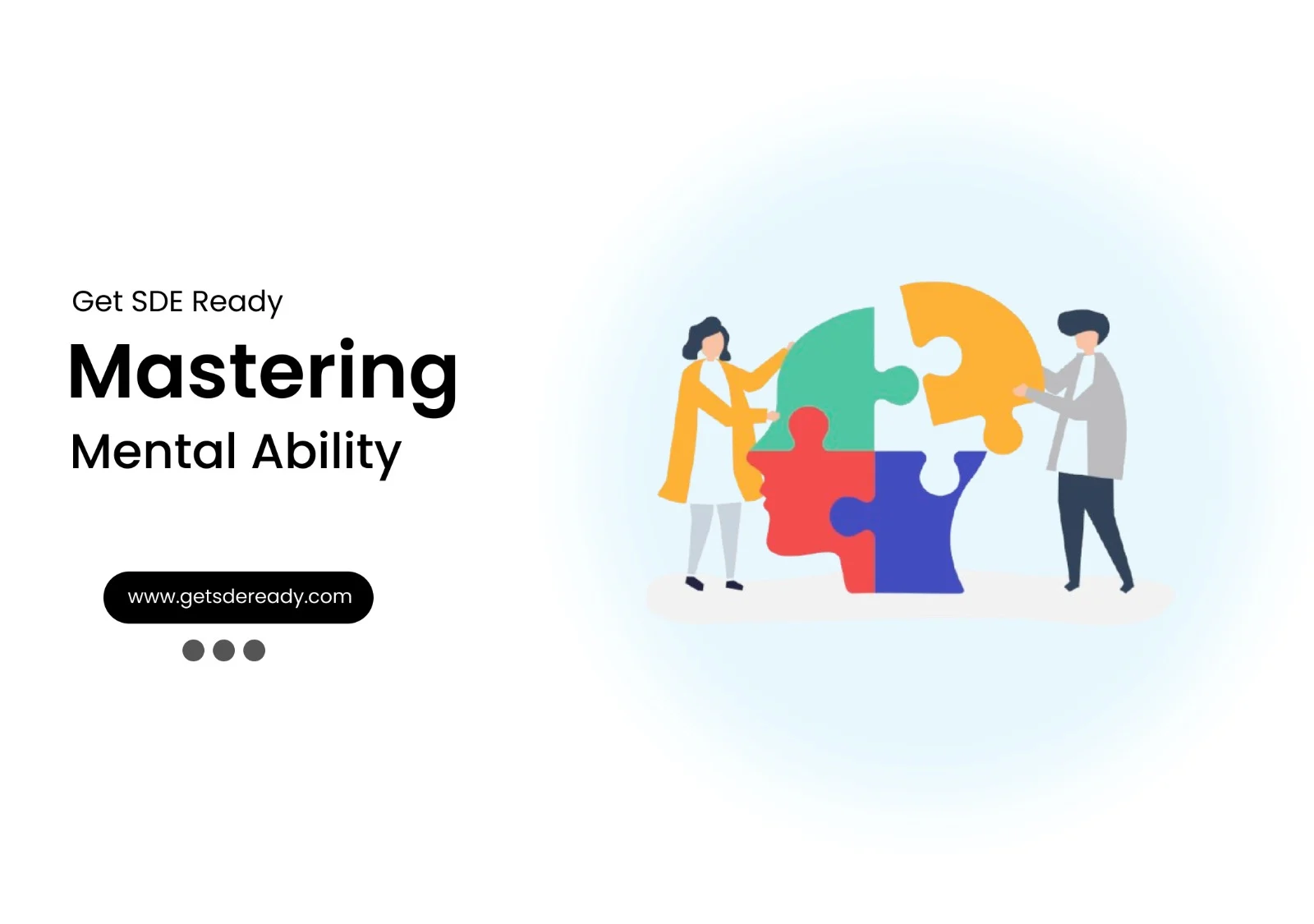Data Structures and Algorithms
- Introduction to Data Structures and Algorithms
- Time and Space Complexity Analysis
- Big-O, Big-Theta, and Big-Omega Notations
- Recursion and Backtracking
- Divide and Conquer Algorithm
- Dynamic Programming: Memoization vs. Tabulation
- Greedy Algorithms and Their Use Cases
- Understanding Arrays: Types and Operations
- Linear Search vs. Binary Search
- Sorting Algorithms: Bubble, Insertion, Selection, and Merge Sort
- QuickSort: Explanation and Implementation
- Heap Sort and Its Applications
- Counting Sort, Radix Sort, and Bucket Sort
- Hashing Techniques: Hash Tables and Collisions
- Open Addressing vs. Separate Chaining in Hashing
- DSA Questions for Beginners
- Advanced DSA Questions for Competitive Programming
- Top 10 DSA Questions to Crack Your Next Coding Test
- Top 50 DSA Questions Every Programmer Should Practice
- Top Atlassian DSA Interview Questions
- Top Amazon DSA Interview Questions
- Top Microsoft DSA Interview Questions
- Top Meta (Facebook) DSA Interview Questions
- Netflix DSA Interview Questions and Preparation Guide
- Top 20 DSA Interview Questions You Need to Know
- Top Uber DSA Interview Questions and Solutions
- Google DSA Interview Questions and How to Prepare
- Airbnb DSA Interview Questions and How to Solve Them
- Mobile App DSA Interview Questions and Solutions
DSA Interview Questions
- DSA Questions for Beginners
- Advanced DSA Questions for Competitive Programming
- Top 10 DSA Questions to Crack Your Next Coding Test
- Top 50 DSA Questions Every Programmer Should Practice
- Top Atlassian DSA Interview Questions
- Top Amazon DSA Interview Questions
- Top Microsoft DSA Interview Questions
- Top Meta (Facebook) DSA Interview Questions
- Netflix DSA Interview Questions and Preparation Guide
- Top 20 DSA Interview Questions You Need to Know
- Top Uber DSA Interview Questions and Solutions
- Google DSA Interview Questions and How to Prepare
- Airbnb DSA Interview Questions and How to Solve Them
- Mobile App DSA Interview Questions and Solutions
Data Structures and Algorithms
- Introduction to Data Structures and Algorithms
- Time and Space Complexity Analysis
- Big-O, Big-Theta, and Big-Omega Notations
- Recursion and Backtracking
- Divide and Conquer Algorithm
- Dynamic Programming: Memoization vs. Tabulation
- Greedy Algorithms and Their Use Cases
- Understanding Arrays: Types and Operations
- Linear Search vs. Binary Search
- Sorting Algorithms: Bubble, Insertion, Selection, and Merge Sort
- QuickSort: Explanation and Implementation
- Heap Sort and Its Applications
- Counting Sort, Radix Sort, and Bucket Sort
- Hashing Techniques: Hash Tables and Collisions
- Open Addressing vs. Separate Chaining in Hashing
- DSA Questions for Beginners
- Advanced DSA Questions for Competitive Programming
- Top 10 DSA Questions to Crack Your Next Coding Test
- Top 50 DSA Questions Every Programmer Should Practice
- Top Atlassian DSA Interview Questions
- Top Amazon DSA Interview Questions
- Top Microsoft DSA Interview Questions
- Top Meta (Facebook) DSA Interview Questions
- Netflix DSA Interview Questions and Preparation Guide
- Top 20 DSA Interview Questions You Need to Know
- Top Uber DSA Interview Questions and Solutions
- Google DSA Interview Questions and How to Prepare
- Airbnb DSA Interview Questions and How to Solve Them
- Mobile App DSA Interview Questions and Solutions
DSA Interview Questions
- DSA Questions for Beginners
- Advanced DSA Questions for Competitive Programming
- Top 10 DSA Questions to Crack Your Next Coding Test
- Top 50 DSA Questions Every Programmer Should Practice
- Top Atlassian DSA Interview Questions
- Top Amazon DSA Interview Questions
- Top Microsoft DSA Interview Questions
- Top Meta (Facebook) DSA Interview Questions
- Netflix DSA Interview Questions and Preparation Guide
- Top 20 DSA Interview Questions You Need to Know
- Top Uber DSA Interview Questions and Solutions
- Google DSA Interview Questions and How to Prepare
- Airbnb DSA Interview Questions and How to Solve Them
- Mobile App DSA Interview Questions and Solutions
Full Stack Developer Interview Preparation: Coding, Architecture, and Problem Solving
As a full stack developer, you’re the Swiss Army knife of the tech world, capable of building web applications from the user interface to the server and database. Landing a full stack developer role requires a blend of technical expertise, problem-solving skills, and the ability to communicate effectively during interviews. This comprehensive guide dives deep into preparing for full stack developer interviews, covering coding, system architecture, problem-solving, and more. Whether you’re a beginner or an experienced developer, this post will equip you with the knowledge and strategies to succeed.
Want free courses and interview prep updates delivered to your inbox? Sign up here and join thousands of devs getting interview-ready with our expert-led resources.
Introduction to Full Stack Development
Full stack development involves working on both the frontend (what users see and interact with) and the backend (the server-side logic and databases that power the application). Full stack developers are highly valued for their versatility, as they can handle the entire development lifecycle. According to a 2023 Stack Overflow Developer Survey, full stack developers are among the most sought-after roles, with 48% of developers identifying as full stack professionals.
Interviews for full stack roles are rigorous, testing a wide range of skills:
- Coding: Writing clean, efficient code for both frontend and backend.
- System Design: Architecting scalable and secure systems.
- Problem-Solving: Tackling algorithmic and real-world challenges.
- Soft Skills: Communicating your thought process and collaborating effectively.
This guide provides actionable advice to help you prepare, with insights drawn from industry resources like InterviewBit, Springboard, and Indeed.
Essential Coding Skills for Full Stack Developers
To excel in a full stack developer interview, you need proficiency in multiple areas. Below are the key coding skills and technologies to master, along with practical tips for preparation.
Programming Languages
- Frontend: JavaScript is essential, with TypeScript gaining popularity for its type safety. Be comfortable with ES6 features like arrow functions, destructuring, and promises.
- Backend: Choose at least one server-side language, such as:
- Node.js (JavaScript runtime with Express framework).
- Python (Django or Flask frameworks).
- Java (Spring framework).
- Ruby (Ruby on Rails).
- PHP (Laravel framework).
- Tip: Focus on one backend language but be familiar with others to demonstrate versatility.
Frontend Technologies
- HTML5 & CSS3: Master semantic HTML and responsive CSS (e.g., Flexbox, Grid).
- JavaScript Frameworks: Learn React, Angular, or Vue.js for building dynamic user interfaces. React is particularly popular, with 40% of developers using it, per the 2023 Stack Overflow survey.
- Responsive Design: Ensure applications work across devices using media queries and frameworks like Tailwind CSS or Bootstrap.
- DOM Manipulation: Understand how to interact with the Document Object Model for dynamic updates.
- Tip: Build a small project, like a to-do list app, using React to practice component-based development.
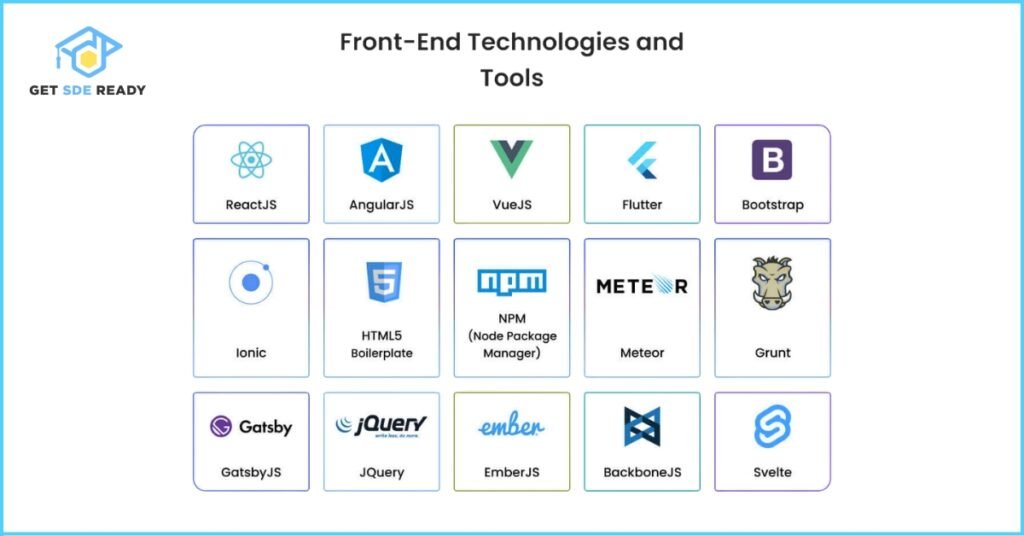
Explore this Web Development Course to reinforce your frontend skills.
Backend Technologies
- Server-Side Frameworks: Use Express (Node.js), Django/Flask (Python), or Spring (Java) to handle server logic and API development.
- APIs: Design RESTful APIs with clear endpoints, proper HTTP methods (GET, POST, PUT, DELETE), and status codes. Understand GraphQL as an alternative for complex queries.
- Authentication & Authorization: Implement secure authentication using JWT or OAuth and role-based access control (RBAC).
- Tip: Create a REST API for a blog application to practice CRUD operations.
Databases
- Relational Databases: MySQL, PostgreSQL, or SQLite. Learn to design schemas, write efficient SQL queries, and normalize data.
- NoSQL Databases: MongoDB, Redis, or Cassandra for handling unstructured data.
- Tip: Practice writing queries to retrieve and manipulate data, such as joining tables in SQL or aggregating data in MongoDB.
Version Control
- Git: Essential for managing code repositories. Be proficient in commands like git commit, git branch, git merge, and resolving conflicts.
- Tip: Contribute to open-source projects on GitHub to gain real-world experience.
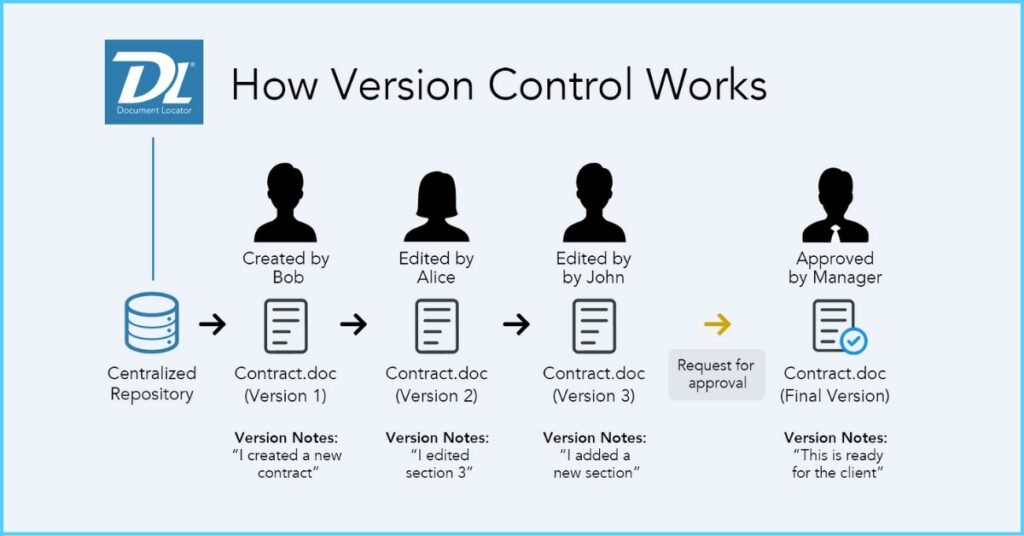
Testing & Debugging
- Unit Testing: Use frameworks like Jest (JavaScript), Pytest (Python), or JUnit (Java).
- Integration Testing: Test how components work together.
- Debugging: Be comfortable identifying and fixing errors in both frontend and backend code.
- Tip: Write unit tests for a simple API endpoint to practice test-driven development.
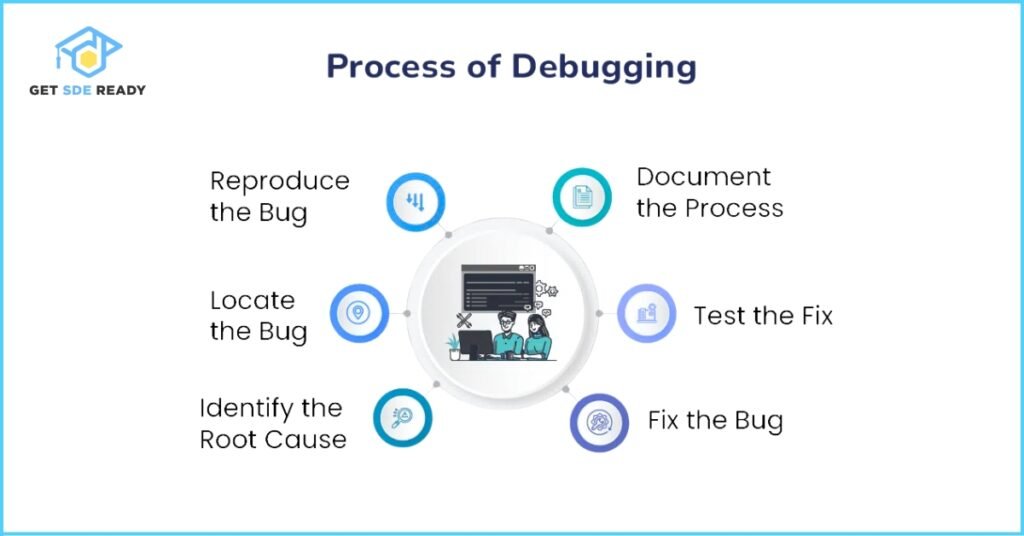
Master full-stack project building to solidify your database skills.
Additional Tools
- Caching: Use Redis or Memcached to improve performance.
- Deployment: Understand Docker, Kubernetes, or cloud platforms like AWS for deploying applications.
- Tip: Deploy a small application to a cloud platform like Heroku to learn the deployment process.
Skill Area | Key Technologies | Practice Tip |
Frontend | HTML5, CSS3, JavaScript, React | Build a responsive portfolio website. |
Backend | Node.js, Python, Java, REST APIs | Create a CRUD API for a blog or e-commerce platform. |
Databases | MySQL, MongoDB, PostgreSQL | Design a database schema for a social media app. |
Version Control | Git, GitHub | Contribute to an open-source project. |
Testing & Debugging | Jest, Pytest, Chrome DevTools | Write unit tests for a simple function or API endpoint. |
Preparation Tip: Build a full stack project, such as a task management app, integrating a frontend framework, backend API, and database. Document your process to discuss during interviews.
Pro Tip: Use Educative’s System Design Guide or sketch designs using Excalidraw.
Mastering System Design and Architecture
System design questions evaluate your ability to architect scalable, efficient, and secure systems. These questions are common for mid-to-senior-level roles but may also appear in junior interviews.
Key System Design Concepts
- Design Patterns:
- MVC (Model-View-Controller): Separates application logic into three components for modularity.
- Singleton: Ensures a class has only one instance.
- Observer: Useful for event-driven systems, like notifications.
- Scalability:
- Load Balancing: Distribute traffic across servers using tools like NGINX.
- Caching: Use Redis or Memcached to reduce database load.
- Database Sharding: Split large databases into smaller, manageable pieces.
- API Design:
- RESTful APIs: Follow principles like statelessness and resource-based URLs.
- GraphQL: Offers flexibility for complex queries, reducing over- or under-fetching.
- Security:
- Protect against vulnerabilities like SQL injection, XSS, and CSRF.
- Implement secure authentication (JWT, OAuth) and authorization (RBAC).
- Deployment Strategies:
- Blue/Green Deployment: Run two identical environments, switching traffic to the new version.
- Rolling Deployment: Gradually update nodes to minimize downtime.
Common System Design Questions
- Design a URL shortening service (like bit.ly).
- Architect a social media platform with features like posting and commenting.
- Build a scalable e-commerce website to handle millions of users.
System Design Topic | Key Considerations | Example Question |
Scalability | Load balancing, caching, sharding | How would you scale a chat application? |
API Design | REST principles, GraphQL, error handling | Design an API for a ride-sharing service. |
Security | Authentication, authorization, encryption | How do you secure user data in a web application? |
Deployment | Blue/Green, Rolling, CI/CD pipelines | Explain how you’d deploy a new feature with zero downtime. |
Preparation Tip: Practice sketching system designs on a whiteboard or online tool like Excalidraw. Study resources like Educative’s “Grokking the System Design Interview” for structured guidance.
Problem-Solving Techniques for Interviews
Problem-solving is a core component of full stack developer interviews. You’ll face coding challenges that test your ability to think logically, write efficient code, and explain your approach.
How to Approach Coding Problems
- Understand the Problem:
- Read the question carefully and clarify constraints (e.g., input size, edge cases).
- Ask questions like, “Are there any specific performance requirements?”
- Break It Down:
- Identify inputs, outputs, and edge cases.
- Think about the problem’s core components.
- Choose the Right Approach:
- Select appropriate data structures (e.g., arrays, hash maps, trees) and algorithms (e.g., sorting, searching).
- Consider time and space complexity.
- Write Pseudocode:
- Outline your solution before coding to organize your thoughts.
- Implement the Solution:
- Write clean, readable code with meaningful variable names.
- Test with sample inputs, including edge cases.
- Explain Your Thought Process:
- Verbalize your approach during the interview, even if you don’t solve the problem perfectly.
Common Problem Types
- Array/String Manipulation: E.g., “Find the longest substring without repeating characters.”
- Linked Lists: E.g., “Reverse a singly linked list.”
- Trees/Graphs: E.g., “Implement a binary search tree.”
- Dynamic Programming: E.g., “Find the longest common subsequence.”
Preparation Tip: Practice on platforms like LeetCode, HackerRank, or CodeSignal. Start with “easy” problems, progress to “medium,” and tackle “hard” problems as you gain confidence. Time yourself to simulate interview conditions.
Common Full Stack Developer Interview Questions
Interviews often include a mix of general, technical, and behavioral questions. Below are examples categorized by area, drawn from resources like InterviewBit and Indeed.
General Questions
- Tell me about yourself.
- Why do you want to be a full stack developer?
- What are your strengths and weaknesses?
- Describe your favorite project and what you learned from it.
Frontend Questions
- What is the difference between block and inline elements in HTML?
- Explain event bubbling and capturing in JavaScript.
- How can you optimize web page loading time? (E.g., minify assets, use lazy loading, leverage CDNs.)
Backend Questions
- What is a RESTful API, and how does it work?
- Explain the difference between SQL and NoSQL databases.
- How do you handle authentication in a web application? (E.g., JWT, OAuth.)
Full Stack Questions
- How would you design a scalable web application?
- Explain the MVC architecture and its benefits.
- What is dependency injection, and why is it useful?
Behavioral Questions
- Tell me about a time you faced a challenging bug and how you resolved it.
- How do you stay updated with the latest technologies?
- Describe a situation where you worked in a team to deliver a project.
Preparation Tip: Use the STAR method (Situation, Task, Action, Result) for behavioral questions. For technical questions, practice explaining concepts in simple terms, as if teaching a beginner.
Preparation Strategies and Resources
To prepare effectively, follow these strategies and leverage high-quality resources.
1. Build Projects
- Create real-world applications to showcase your skills, such as:
- A blog platform with user authentication.
- A task management app with CRUD functionality.
- An e-commerce site with product listings and a shopping cart.
- Document your process to discuss during interviews.
2. Study Materials
- Books:
- “Cracking the Coding Interview” by Gayle Laakmann McDowell for coding challenges.
- “Designing Data-Intensive Applications” by Martin Kleppmann for system design.
- Online Courses:
- Coursera’s “Microsoft Full-Stack Developer Professional Certificate.”
- Udemy’s “The Web Developer Bootcamp” by Colt Steele.
- Tutorials:
- MDN Web Docs for HTML, CSS, and JavaScript.
- W3Schools for quick references and examples.
3. Practice Platforms
- Coding: LeetCode, HackerRank, CodeSignal for algorithmic problems.
- System Design: Educative’s “Grokking the System Design Interview” for structured learning.
- Mock Interviews: Pramp or Interviewing.io for realistic practice.
4. Communities and Forums
- Stack Overflow: Ask and answer technical questions.
- Reddit’s r/webdev: Engage in discussions and seek advice.
- LinkedIn Groups: Network with professionals and explore job opportunities.
5. Stay Updated
- Follow tech blogs like Medium, Dev.to, or Smashing Magazine.
- Attend webinars, conferences, or hackathons to learn about trends like progressive web apps or real-time web development.
Resource Type | Examples | Purpose |
Books | Cracking the Coding Interview | Master coding challenges and algorithms. |
Online Courses | Coursera, Udemy | Learn full stack development systematically. |
Practice Platforms | LeetCode, HackerRank, Educative | Practice coding and system design problems. |
Communities | Stack Overflow, Reddit, LinkedIn | Seek advice, network, and stay updated. |
Preparation Tip: Dedicate 1–2 months to preparation if you’re new to full stack development. Focus on one area at a time (e.g., frontend, then backend) to build a strong foundation.
Conclusion and Call to Action
Preparing for a full stack developer interview requires a balanced approach: mastering coding skills, understanding system design, practicing problem-solving, and refining soft skills. By building projects, leveraging high-quality resources, and practicing consistently, you can approach your interview with confidence.
Start today! Pick one action—solve a coding problem on LeetCode, design a system for a URL shortener, or build a small full stack app. Every step brings you closer to landing your dream role.
FAQs
What should I learn first for full stack development?
CORS is a web security mechanism that allows servers to specify who can access their resources from a different origin. It’s used to relax the browser’s default Same-Origin Policy in a controlled way, enabling safe cross-domain API calls.
How do I prepare for full stack developer interviews?
The Same-Origin Policy blocks web pages from reading data from a different origin (different protocol, domain, or port). For example, code on https://siteA.com can’t fetch data from https://siteB.com unless CORS headers permit it. SOP is a security feature to isolate sites from each other.
What projects should I add to my full stack portfolio?
A preflight is an automatic OPTIONS request the browser sends before a cross-origin request that isn’t “simple” (e.g. uses PUT/DELETE or custom headers). The browser checks the response’s Access-Control-Allow-* headers to see if the actual request is allowed. If allowed, the browser proceeds; otherwise it blocks the request.
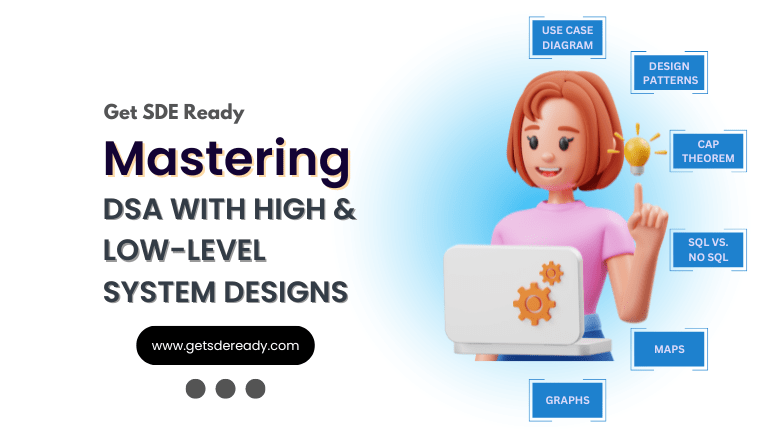
DSA, High & Low Level System Designs
- 85+ Live Classes & Recordings
- 24*7 Live Doubt Support
- 400+ DSA Practice Questions
- Comprehensive Notes
- HackerRank Tests & Quizzes
- Topic-wise Quizzes
- Case Studies
- Access to Global Peer Community
Buy for 52% OFF
₹25,000.00 ₹11,999.00
Accelerate your Path to a Product based Career
Boost your career or get hired at top product-based companies by joining our expertly crafted courses. Gain practical skills and real-world knowledge to help you succeed.
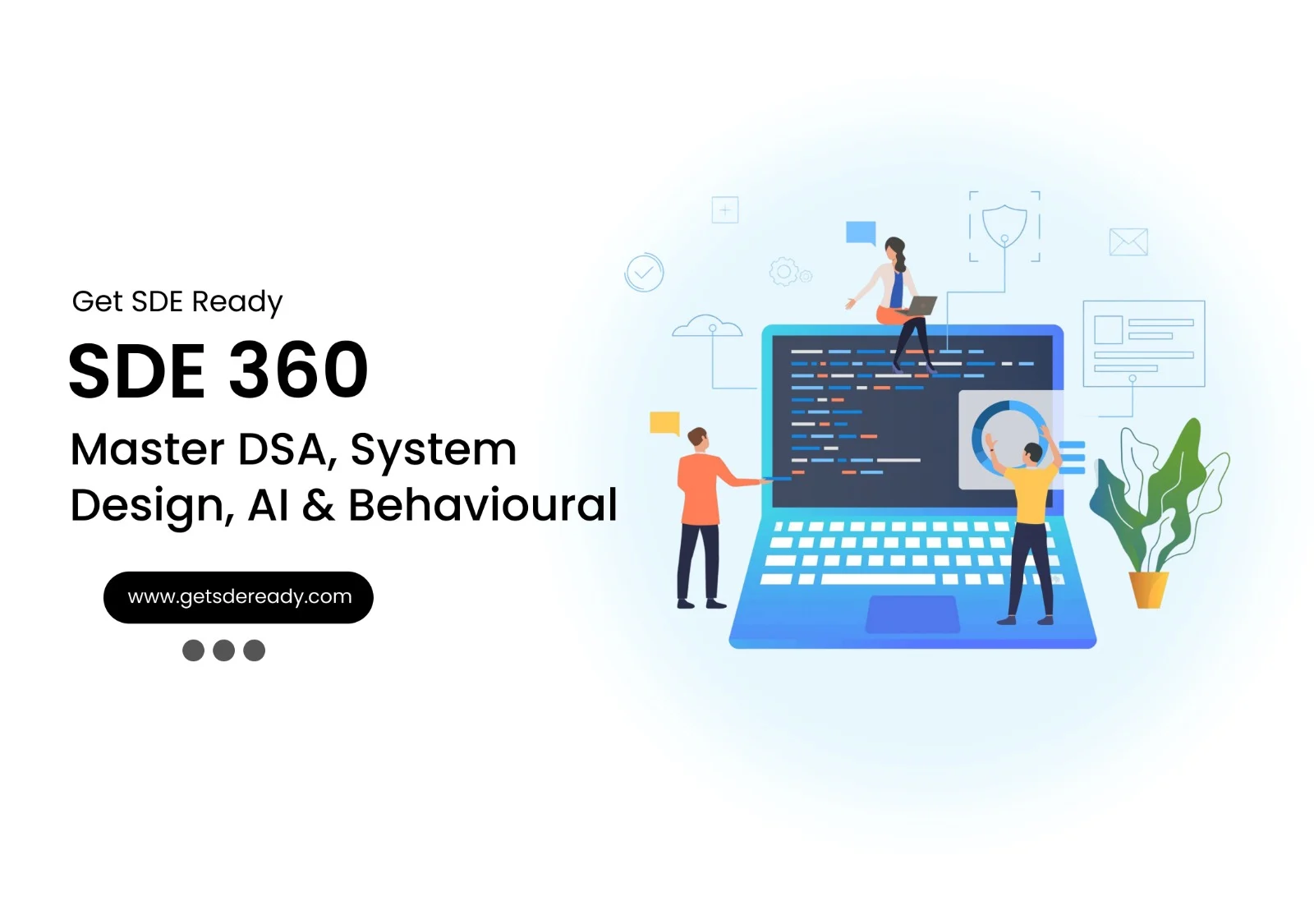
SDE 360: Master DSA, System Design, AI & Behavioural
- 100+ Live Classes & Recordings
- 24*7 Live Doubt Support
- 400+ DSA Practice Questions
- Comprehensive Notes
- HackerRank Tests & Quizzes
- Topic-wise Quizzes
- Case Studies
- Access to Global Peer Community
Buy for 50% OFF
₹39,999.00 ₹19,999.00

DSA, High & Low Level System Designs
- 85+ Live Classes & Recordings
- 24*7 Live Doubt Support
- 400+ DSA Practice Questions
- Comprehensive Notes
- HackerRank Tests & Quizzes
- Topic-wise Quizzes
- Case Studies
- Access to Global Peer Community
Buy for 52% OFF
₹25,000.00 ₹11,999.00
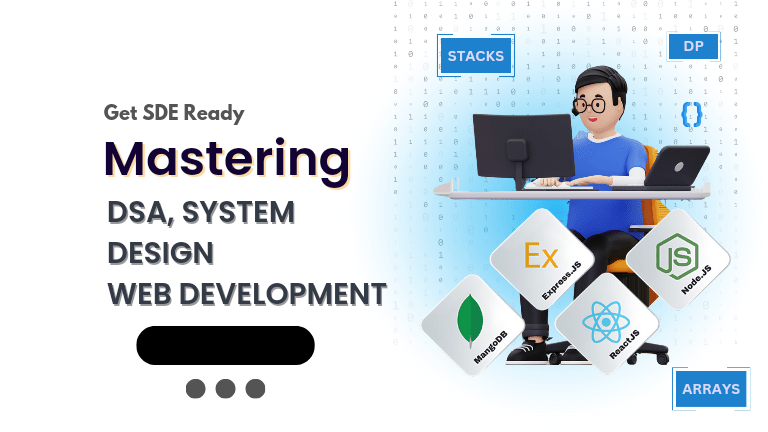
Fast-Track to Full Spectrum Software Engineering
- 120+ Live Classes & Recordings
- 24*7 Live Doubt Support
- 400+ DSA Practice Questions
- Comprehensive Notes
- HackerRank Tests & Quizzes
- 12+ live Projects & Deployments
- Case Studies
- Access to Global Peer Community
Buy for 51% OFF
₹35,000.00 ₹16,999.00

Low & High Level System Design
- 20+ Live Classes & Recordings
- 24*7 Live Doubt Support
- Case Studies
- Comprehensive Notes
- HackerRank Tests
- Topic-wise Quizzes
- Access to Global Peer Community
- Interview Prep Material
Buy for 60% OFF
₹20,000.00 ₹7,999.00
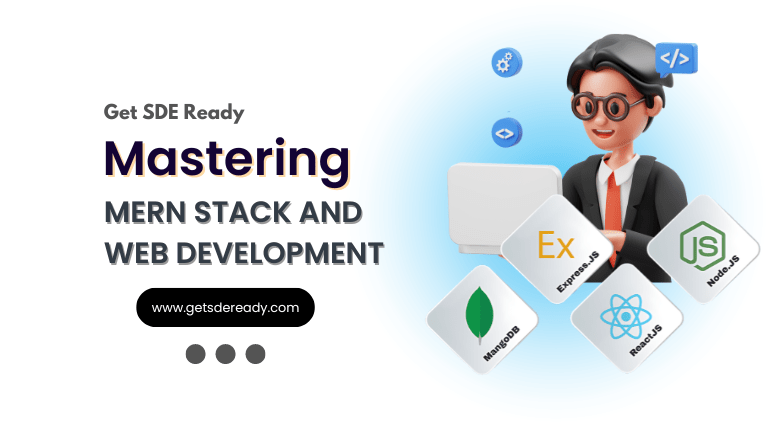
Mastering Mern Stack (WEB DEVELOPMENT)
- 65+ Live Classes & Recordings
- 24*7 Live Doubt Support
- 12+ Hands-on Live Projects & Deployments
- Comprehensive Notes & Quizzes
- Real-world Tools & Technologies
- Access to Global Peer Community
- Interview Prep Material
- Placement Assistance
Buy for 53% OFF
₹15,000.00 ₹6,999.00
Reach Out Now
If you have any queries, please fill out this form. We will surely reach out to you.
Contact Email
Reach us at the following email address.
arun@getsdeready.com
Phone Number
You can reach us by phone as well.
+91-97737 28034
Our Location
Rohini, Sector-3, Delhi-110085
